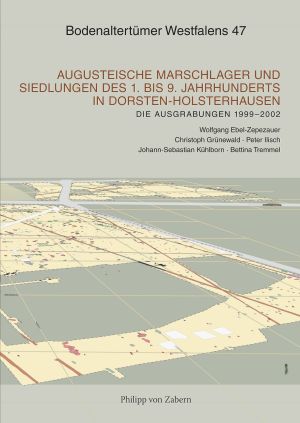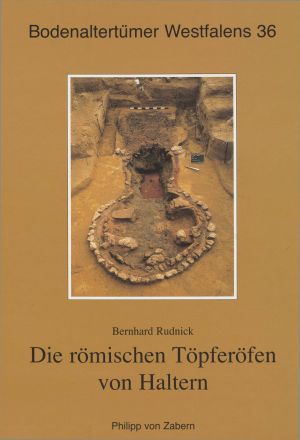Ilisch, Peter
Augusteische Marschlager und Siedlungen des 1. bis 9. Jahrhunderts in Dorsten-Holsterhausen: Die Ausgrabungen 1999 bis 2002
The LWL-Archaeology for Westphalia carried out its largest excavation to date from 1999 to 2002 at the Kreskenhof in Dorsten-Holsterhausen. On 120,000 square meters, five Roman encampments as well as imperial and medieval settlement traces were investigated with several thousand finds and features.
Four of the five Roman camps were large enough to accommodate the soldiers of more than one legion. The first evidence of Roman occupation dates back to the time of the Drusus campaign. Among the finds, a purse filled with 36 silver denarii is particularly noteworthy, which contained the legionary pay of two months and dates back to the governor period of Varus in Germania.
Only half a century after the withdrawal of the Roman troops a small Germanic settlement developed in Holsterhausen with pit houses, granarys as well as larger post-built house. The pit houses were moved on after some decades, which is unique so far – as well as the large-scale distribution of the buildings within the Germanic settlement.
Die römischen Töpfereien von Haltern
From 1990 to 1993, in front of the porta praetoria of the main camp in Haltern, a pottery district was discovered and archaeologically investigated, which existed at the same time as the camp. Unambiguous workshop buildings could not be identified, because the excavation section was too small. However, several kilns and pottery were uncovered. The range of types produced is considerably broader than in other Augustan military pottery workshops, and at the same time some types, such as the cooking pot types Ha 56 to 58, were produced in a veritable mass production.
The entire pottery district T8 was levelled in Roman times. Skeletons of 24 probably male individuals and one dog were uncovered, which had been thrown into the working pit of kiln 10 without grave goods and were covered with the rubble. Since both Germanic tribes and Romans would have cremated and buried their own dead, these are probably Germanic warriors who were buried after an attack.
Anthropological, archaeomagnetic, geochemical and mineral analyses of finds and features complete the investigation.








